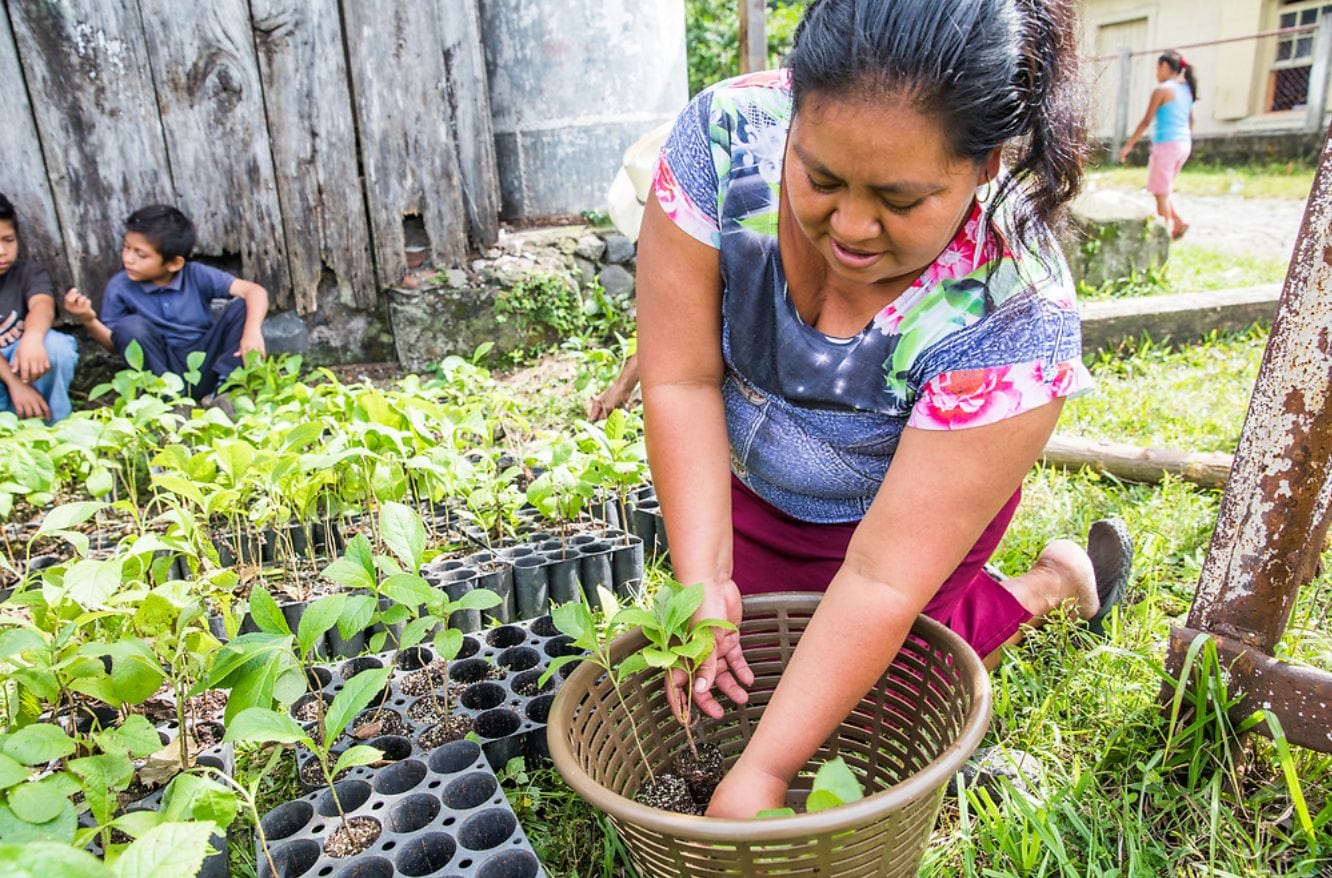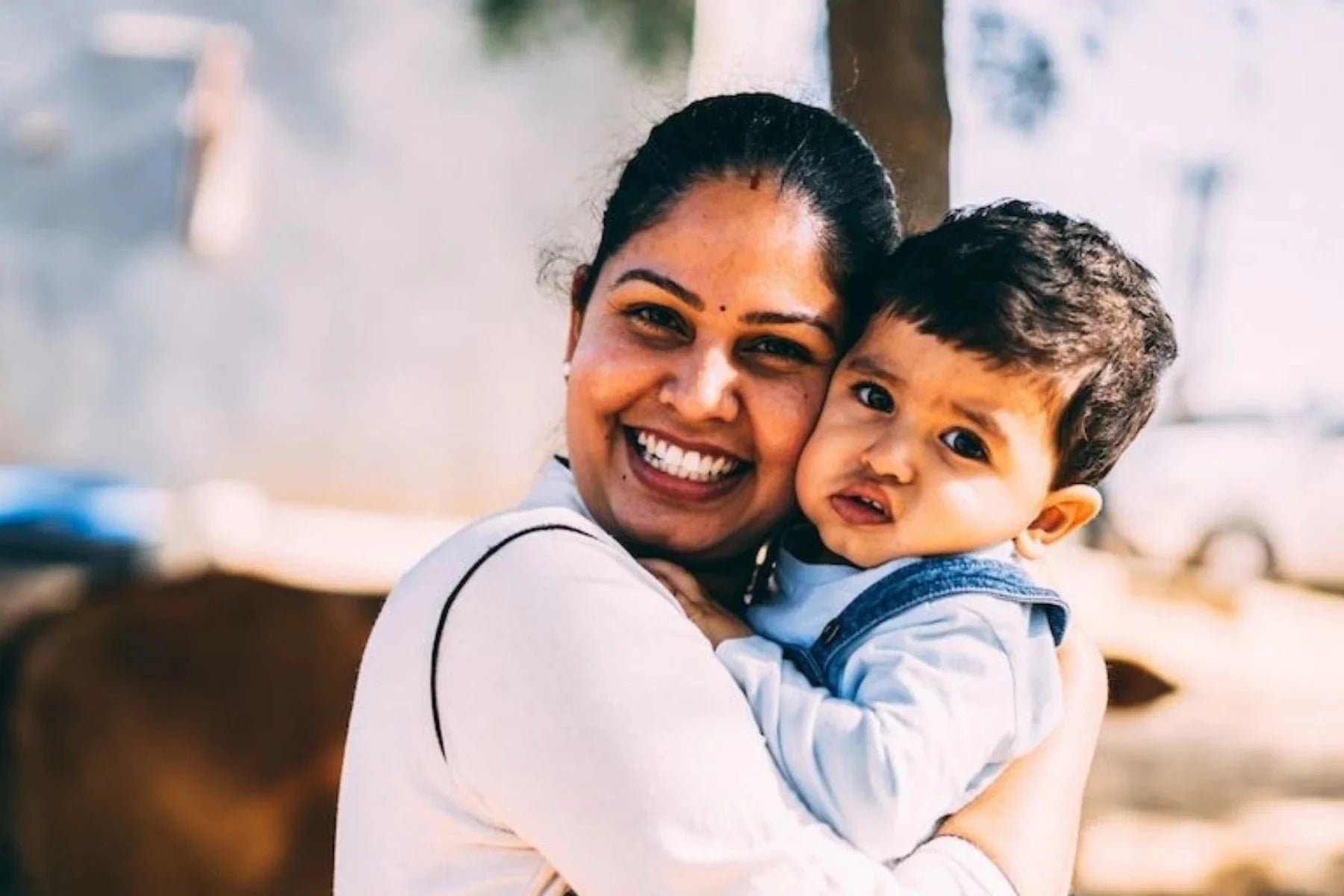
Click here to support reforestation
with your company.
Get news, updates, & event Info delivered right to your inbox:
Women's Empowerment Has a Powerful Ripple Effect
Inequality is deeply rooted in the challenges we collectively face. For example, a recent UN Women Report found that by 2050, climate change may push up to 158 million more women and girls into poverty — and see 236 million more face food insecurity. Yet if we look at who has the potential to positively influence the systems that guide us — socially, environmentally, and economically — we’ll find women leading the charge.
When women are provided with access to resources and education, and empowered to act as community leaders, the resulting benefits aren’t just more productive farms and healthier families, but also significant environmental benefits.
3 Ways Empowering Women Can Help Heal the Earth:

1. Land Ownership and Access to Resources Can Reduce Hunger and Deforestation
According to UN Women (and based on research by the UN FAO), if women smallholder farmers received equal access to productive resources, farm yields would increase by up to 30%, and an estimated 150 million people would no longer go hungry. In addition, deforestation and emissions would decline.
This matters, because agricultural expansion drives almost 90 percent of global deforestation — and, by extension, many related impacts such as biodiversity loss, desertification, and increased carbon in the atmosphere. When existing agricultural lands and forest management are improved, there is less pressure to deforest further ground.
Furthermore, the communities around the world that have gender quotas in decision-making for local forest management have higher success rates with conservation programs and distribute resources more equally in the community, reducing the need for subsistence activities that are environmentally destructive.
Currently, many countries exclude women from being able to own land or make community decisions regarding land management. But providing women with land rights and farming resources could significantly support local and global sustainability goals.

2. Family Planning Can Reduce Overpopulation
Overpopulation is the taboo elephant in the room when it comes to humanity’s unsustainable growth. On a planet with dwindling resources, it’s clear that managing our human population deserves more attention — as well as other Sustainable Development Goals like reducing poverty and hunger.
According to 2023 estimates by the World Health Organization, 257 million women of reproductive age have an unmet need for contraception. In the US, despite an overall decline in pregnancy rates, a CDC study found that around 35% of pregnancies were unintended.
Family planning isn’t just about contraception, though. The most successful family planning programs integrate religious leaders, public education campaigns and basic care for women and children where they live.
Combined with free access to contraception, family planning could reduce pressure on environmental systems and improve humanitarian challenges.

3. Educating Girls Improves Climate Resilience
A girls’ education can greatly impact her role in either exacerbating or mitigating global warming. Women with more years of education have fewer and healthier children. And since women play an important role as stewards and managers of food, soil, trees and water, their education creates empowerment within community structures as it relates to land management, farming techniques and administrative tasks, further benefiting the environment, climate, and biodiversity around her.
According to the United Nations, 130 million girls are denied the human right to education around the world, and climate-related crises further reduce that capacity. In times of hardship, girls are more likely to be married early since a girl’s dowry can help a family cope with financial stress — and girls are also the first to be removed from school to help with household needs.
But mobilizing communities to support and sustain education for girls can greatly benefit social and environmental conditions. Estimates by Project Drawdown, suggest that together with family planning, girls’ education could reduce carbon dioxide equivalent emissions by nearly 70 gigatons between 2020-2050.

Women and Land Restoration: Potential for Positive Change
While it's unfortunate that gender inequality impedes progress in many areas, we can take the optimistic view that now that with greater understanding of gender-based challenges comes a clear path to action. Equipping women with access to the same resources as men, ensuring education, and encouraging family planning are all doable strategies that can improve the lives of women, their children, the natural world around them, and the planet as a whole. For International Women's Day, and every day, we support the role of female environmental leaders.
Empowering women is a proven way to improve environmental outcomes. Plant trees to support women and the environment today!
Click here to support reforestation
with your company.
Get news, updates, & event Info delivered right to your inbox:
Related Posts
Plant Your Resolution: Making a Global Impact With The Grove
01/01/2026 by One Tree Planted
Trees & Oxygen: How They Produce It, How Much They Make, and Why It Matters
30/12/2025 by One Tree Planted
Amazon Rainforest Facts & Why It Matters for the Planet
25/12/2025 by One Tree Planted
Popular On One Tree Planted
How to Reduce Waste: 21 Practical Zero Waste Tips for Everyday Living
23/12/2025 by Meaghan Weeden
Inspirational Quotes About Trees
16/12/2025 by Meaghan Weeden
The 9 Oldest, Tallest, and Biggest Trees in the World
11/12/2025 by One Tree Planted
Fundraising Disclosures

Be Part of the Restoration Movement
The Grove is more than just a monthly giving program: it's a vibrant community of individuals who are dedicated to reforestation and environmental restoration on a global scale.





